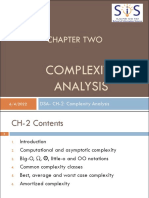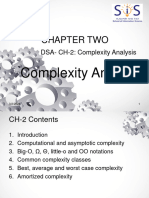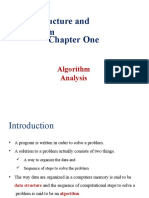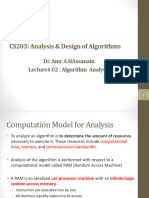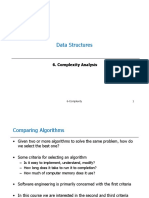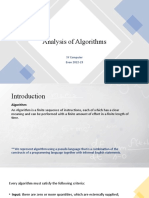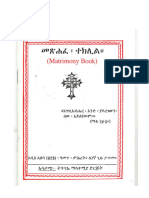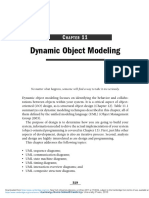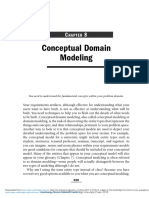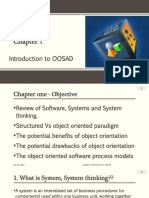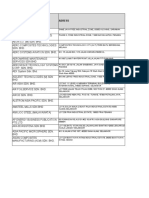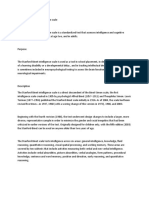0% found this document useful (1 vote)
84 views80 pagesDSA-Chapter 2 - Complexity - Analysis
The document discusses complexity analysis of algorithms. It defines complexity analysis as determining the amount of computing resources like time and space required by algorithms. It discusses analyzing worst-case, average-case and best-case complexity. Key points covered include asymptotic complexity analysis using big-O notation, analyzing time and space complexity, and rules for analyzing loops and recursive functions.
Uploaded by
Yoni YoniCopyright
© © All Rights Reserved
We take content rights seriously. If you suspect this is your content, claim it here.
Available Formats
Download as PDF, TXT or read online on Scribd
0% found this document useful (1 vote)
84 views80 pagesDSA-Chapter 2 - Complexity - Analysis
The document discusses complexity analysis of algorithms. It defines complexity analysis as determining the amount of computing resources like time and space required by algorithms. It discusses analyzing worst-case, average-case and best-case complexity. Key points covered include asymptotic complexity analysis using big-O notation, analyzing time and space complexity, and rules for analyzing loops and recursive functions.
Uploaded by
Yoni YoniCopyright
© © All Rights Reserved
We take content rights seriously. If you suspect this is your content, claim it here.
Available Formats
Download as PDF, TXT or read online on Scribd
/ 80
